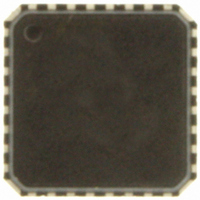ADT7462ACPZ-5RL7 ON Semiconductor, ADT7462ACPZ-5RL7 Datasheet - Page 42

ADT7462ACPZ-5RL7
Manufacturer Part Number
ADT7462ACPZ-5RL7
Description
IC TEMP/VOLT MONITOR 32-LFCSP
Manufacturer
ON Semiconductor
Datasheet
1.ADT7462ACPZ-5RL7.pdf
(81 pages)
Specifications of ADT7462ACPZ-5RL7
Function
Fan Control, Temp Monitor
Topology
ADC, Comparator, Multiplexer, Register Bank
Sensor Type
External & Internal
Sensing Temperature
-40°C ~ 125°C, External Sensor
Output Type
SMBus™
Output Alarm
No
Output Fan
Yes
Voltage - Supply
3 V ~ 5.5 V
Operating Temperature
-40°C ~ 125°C
Mounting Type
Surface Mount
Package / Case
32-LFCSP
Supply Voltage (max)
5.5 V
Supply Voltage (min)
3 V
Maximum Operating Temperature
+ 125 C
Minimum Operating Temperature
- 40 C
Lead Free Status / RoHS Status
Lead free / RoHS Compliant
Other names
ADT7462ACPZ-500RL7
ADT7462ACPZ-500RL7
ADT7462ACPZ-500RL7TR
ADT7462ACPZ-500RL7TR
ADT7462ACPZ-5RL7TR
ADT7462ACPZ-500RL7
ADT7462ACPZ-500RL7TR
ADT7462ACPZ-500RL7TR
ADT7462ACPZ-5RL7TR
Available stocks
Company
Part Number
Manufacturer
Quantity
Price
Company:
Part Number:
ADT7462ACPZ-5RL7
Manufacturer:
ON Semiconductor
Quantity:
135
Dynamic T
extension of the automatic fan control mode, the automatic
fan control mode parameters should be programmed first
(see Step 1 − Configuring the MUX through Step 8 −
Operating Points for Temperature Channels). Then proceed
with dynamic T
Step 8—Operating Points for Temperature Channels
optimal temperature for that thermal zone. The hotter each
zone is allowed to be, the quieter the system, because the fans
are not required to run as fast. The ADT7462 increases or
decreases fan speeds as necessary to maintain the operating
point temperature, allowing for system−to−system variation
and removing the need for worst−case design. If a sensible
operating point value is chosen, any T
selected in the system characterization. If the T
too low, the fans run sooner than required, and the
temperature is below the operating point. In response, the
ADT7462 increases T
allow the temperature zone to get closer to the operating
point. Likewise, too high a T
point to be exceeded, and in turn, the ADT7462 reduces T
to turn the fans on sooner to cool the system.
Programming the Operating Point Registers
Remote 1 temperature channel and one for the Remote 2
temperature channel. These 8−bit registers allow the
operating point temperatures to be programmed with 1°C
resolution.
Table 24. T
Parameter
Table 24 provides a brief description of each parameter.
Because the dynamic T
The operating point for each temperature channel is the
There are two operating point registers, one for the
Operating
T
T
T
T
RANGE
T
Point
THERM
HIGH
LOW
MIN
MIN
MIN
If the temperature drops below the T
an error flag is set in a status register and an
SMBALERT interrupt can be generated.
If the temperature exceeds the T
error flag is set in a status register and an
SMBALERT interrupt can be generated.
The temperature at which the fan turns on
under automatic fan speed control.
The maximum target temperature for a
particular temperature zone. The system
attempts to maintain system temperature
around the operating point by adjusting the
T
If the temperature exceeds this critical limit, the
fans can be run at 100% for maximum cooling.
Programs the PWM duty cycle vs. temperature
control slope.
Control Programming
MIN
Control Loop Parameters
MIN
parameter of the control loop.
control mode programming.
MIN
to keep the fans off longer and to
MIN
MIN
Description
control mode is a basic
value causes the operating
MIN
HIGH
value can be
MIN
LOW
limit, an
value is
limit,
http://onsemi.com
MIN
42
Operating Point Registers
Register 0x5A, Remote 1 Operating Point = 0xA4
(100°C default)
Register 0x5B, Remote 2 Operating Point = 0xA4
(100°C default)
Operating Point Hysteresis Register
below the operating point at which T
Register 0x64, Bits [7:4] Operating Point Hysteresis = 0x40
(4°C default)
Step 9—High and Low Limits for Temperature
Channels
value starts to be increased, if temperature falls below this
value. This has the net effect of reducing the fan speed,
allowing the system to get hotter. An interrupt can be
generated when the temperature drops below the low limit.
below the critical THERM point. An interrupt can be
generated when the temperature rises above the high limit.
How Dynamic T
follows:
Short Cycle and Long Cycle
decrease) cycle and a long (or increase) cycle. The short
cycle takes place every n monitoring cycles. The long cycle
takes place every 2n monitoring cycles. The value of n is
programmable for each temperature channel. The bits are
located at the following register locations.
Dynamic T
Bits [2:0] (CYR1) = Remote 1
Bits [5:3] (CYR2) = Remote 2
The operating point hysteresis register sets the value
The low limit defines the temperature at which the T
The high limit should be set above the operating point but
The basic operation of dynamic T
The ADT7462 implements two loops: a short (or
1. Set the target temperature for the temperature
2. As the temperature in that zone rises toward and
3. As the temperature drops below the low limit
zone, which could be, for example, the Remote 1
thermal diode. This value is programmed to the
Remote 1 operating point register.
exceeds the operating point temperature minus
hysteresis, T
increases.
value, T
reduced.
MIN
Control Register 2 (0x0C)
MIN
MIN
MIN
is increased and the fan speed is
Control Works
is reduced and fan speed
MIN
MIN
begins to reduce.
control is as
MIN












